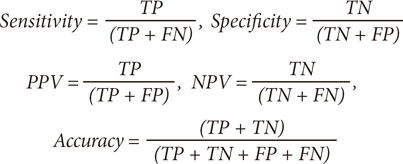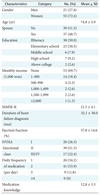1. Cortes C, Vapnik V. Support-vector networks. Mach Learn. 1995. 20:273–297.

2. Verplancke T, Van Looy S, Benoit D, Vansteelandt S, Depuydt P, De Turck F, Decruyenaere J. Support vector machine versus logistic regression modeling for prediction of hospital mortality in critically ill patients with haematological malignancies. BMC Med Inform Decis Mak. 2008. 8:56.

3. Yu W, Liu T, Valdez R, Gwinn M, Khoury MJ. Application of support vector machine modeling for prediction of common diseases: the case of diabetes and prediabetes. BMC Med Inform Decis Mak. 2010. 10:16.

4. Maglogiannis I, Loukis E, Zafiropoulos E, Stasis A. Support vectors machine-based identification of heart valve diseases using heart sounds. Comput Methods Programs Biomed. 2009. 95:47–61.

5. Thurston RC, Matthews KA, Hernandez J, De La Torre F. Improving the performance of physiologic hot flash measures with support vector machines. Psychophysiology. 2009. 46:285–292.

6. Chu A, Ahn H, Halwan B, Kalmin B, Artifon EL, Barkun A, Lagoudakis MG, Kumar A. A decision support system to facilitate management of patients with acute gastrointestinal bleeding. Artif Intell Med. 2008. 42:247–259.

7. Rice SB, Nenadic G, Stapley BJ. Mining protein function from text using term-based support vector machines. BMC Bioinformatics. 2005. 6:Suppl 1. S22.

8. Hauptman PJ. Medication adherence in heart failure. Heart Fail Rev. 2008. 13:99–106.

9. Komajda M, Lapuerta P, Hermans N, Gonzalez-Juanatey JR, van Veldhuisen DJ, Erdmann E, Tavazzi L, Poole-Wilson P, Le Pen C. Adherence to guidelines is a predictor of outcome in chronic heart failure: the MAHLER survey. Eur Heart J. 2005. 26:1653–1659.

10. Toh CT, Jackson B, Gascard DJ, Manning AR, Tuck EJ. Barriers to medication adherence in chronic heart failure patients during home visits. J Pharm Pract Res. 2010. 40:27–30.

11. Riegel B, Moser DK, Anker SD, Appel LJ, Dunbar SB, Grady KL, Gurvitz MZ, Havranek EP, Lee CS, Lindenfeld J, Peterson PN, Pressler SJ, Schocken DD, Whellan DJ. American Heart Association Council on Cardiovascular Nursing. American Heart Association Council on Clinical Cardiology. American Heart Association Council on Nutrition, Physical Activity, and Metabolism. American Heart Association Interdisciplinary Council on Quality of Care and Outcomes Research. State of the science: promoting self-care in persons with heart failure: a scientific statement from the American Heart Association. Circulation. 2009. 120:1141–1163.
12. van der Wal MH, Jaarsma T, Moser DK, Veeger NJ, van Gilst WH, van Veldhuisen DJ. Compliance in heart failure patients: the importance of knowledge and beliefs. Eur Heart J. 2006. 27:434–440.

13. Hope CJ, Wu J, Tu W, Young J, Murray MD. Association of medication adherence, knowledge, and skills with emergency department visits by adults 50 years or older with congestive heart failure. Am J Health Syst Pharm. 2004. 61:2043–2049.

14. Rud S, Yang JS. A support vector machine (SVM) classification approach to heart murmur detection. Lect Notes Comp Sci. 2010. 6004:52–59.

15. Balasubramanian VN, Gouripeddi R, Panchanathan S, Vermillion J, Bhaskaran A, Siegel RM. Support vector machine based conformal predictors for risk of complications following a coronary drug eluting stent procedure. In : Proceedings of Computer in Cardiology 2009; 2009 Sept 13-16; Park City, UT, USA. 5–8.
16. Choi K, Chung S, Rhee H, Suh Y. Classification and sequential pattern analysis for improving managerial efficiency and providing better medical service in public healthcare centers. Healthc Inform Res. 2010. 16:67–76.

17. Choi JP, Han TH, Park RW. A hybrid Bayesian network model for predicting breast cancer prognosis. J Korean Soc Med Inform. 2009. 15:49–57.

18. Kim BM, Kang BY, Kim HG, Baek SH. Prognosis prediction for class III malocclusion treatment by feature wrapping method. Angle Orthod. 2009. 79:683–691.

19. Guyon I, Weston J, Barnhill S, Vapnik V. Gene selection for cancer classification using support vector machines. Mach Learn. 2002. 46:389–422.
22. Swets JA. Measuring the accuracy of diagnostic systems. Science. 1988. 240:1285–1293.

23. Kim H, Drake BL, Park H. Adaptive nonlinear discriminant analysis by regularized minimum squared errors. IEEE Trans Knowl Data Eng. 2006. 18:603–612.

24. Vlasnik JJ, Aliotta SL, DeLor B. Medication adherence: factors influencing compliance with prescribed medication plans. Case Manager. 2005. 16:47–51.

25. Morrow DG, Weiner M, Young J, Steinley D, Deer M, Murray MD. Improving medication knowledge among older adults with heart failure: a patient-centered approach to instruction design. Gerontologist. 2005. 45:545–552.

26. Berkson J. Limitations of the application of fourfold table analysis to hospital data. Biometrics. 1946. 2:47–53.

27. Cho BH, Yu H, Kim KW, Kim TH, Kim YI, Kim SI. Application of irregular and unbalanced data to predict diabetic nephropathy using visualization and feature selection methods. Artif Intell Med. 2008. 42:37–53.

 subject to yi (wTØ(xi) + b) ≥ 1-εi, where εi≥0, where the training data are mapped to a higher dimensional space by the function Ø, and C is a penalty parameter on the training error. Therefore, for any testing vector x, the decision function (predictor) is f(x) = sign(wTØ(x) + b).
subject to yi (wTØ(xi) + b) ≥ 1-εi, where εi≥0, where the training data are mapped to a higher dimensional space by the function Ø, and C is a penalty parameter on the training error. Therefore, for any testing vector x, the decision function (predictor) is f(x) = sign(wTØ(x) + b).




 PDF
PDF ePub
ePub Citation
Citation Print
Print






 XML Download
XML Download